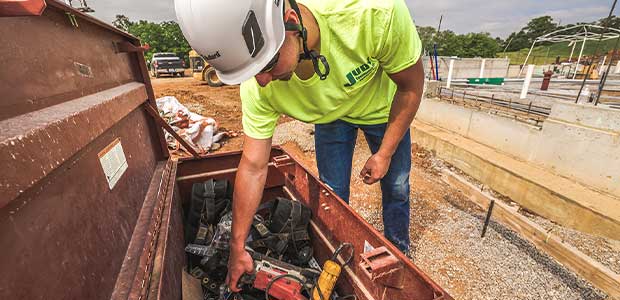
Is It Time to Rethink Your Head Protection?
Making a relatively simple switch could protect workers.
In the late 1960s, prior to the Occupational Safety and Health Act’s existence, 14,000 workers were dying as the result of workplace injuries each year. By 2020, the number of workplace fatalities had fallen to just shy of 5,000—a roughly 60 percent decline.
This decline demonstrates the value that OSHA and the resulting focus on workplace safety provides to both employees and employers, but there remains room for improvement, particularly in the construction space.
Of the 4,764 fatal workplace injuries reported in 2020, 1,034 were in the construction industry. Out of those 1,034 construction fatalities, 353 were caused by falls from a height. Thankfully, there are some simple steps employers can take to continue to improve these numbers and protect more workers on the job.
One such step is to reconsider the protective equipment being used on-site to protect workers’ heads, especially during a fall. In recent years, more and more construction and industrial workers have been opting to wear safety-style helmets, instead of a traditional hard hat.
A traditional hard hat, whether ANSI Z89.1 Type I or Type II, is designed to protect primarily against impact made to the head by falling or swinging objects. A Type I hard hat, which is the most commonly used type in the construction industry, protects the top of the wearer’s head. A Type II hard hat protects the top and sides of the head. A safety helmet, which is typically classified as Type I, will usually offer enhanced side protection as well. It’s not uncommon for safety helmet manufacturers to reference performance clauses of EN 12492, the European mountaineering helmet standard, which includes side impact requirements beyond those of the typical ANSI Type I. This standard provides customers with an option of a helmet that doesn’t have the full protection of an ANSI Type II helmets, but that can still provide some side impact protection.
Beyond mitigating impacts, safety helmets can enhance worker comfort as well. Helmets equipped with foam liners will distribute the weight of the helmet of the user’s head in a more uniform manner because it touches more of the workers head versus traditional strap suspensions. Think if you have a can of soup and you hold it with three fingers versus four. Which is easier to hold? Having additional touch points on your head with the helmet is no different and provides a more uniform fit. Foam liners also allow for additional comfort padding, which can help to provide cooling and capture sweat.
This article originally appeared in the September 1, 2022 issue of Occupational Health & Safety.